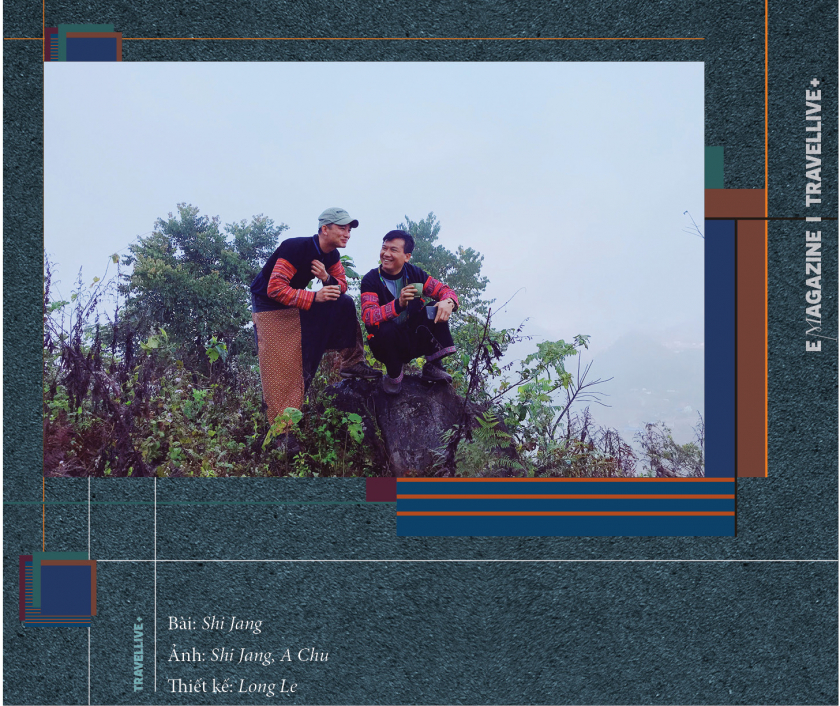In 2015, on the way to spring travel, I met A Chu at his family's homestay that was under construction. After a family dinner with many delicious dishes cooked by A Chu's wife and niece, gathered around the improved fireplace, harmonizing with the melodious and captivating sound of the H'Mong flute that A Chu played, we shared many experiences to walk together on the path of spreading culture to tourists who will have the chance to stop at his family's house.

Hua Tat Village lies nestled in the valley right in the middle of Hua Tat Pass on Highway 6 connecting to Moc Chau city of Son La province with very poetic scenery.
At that time, Trang A Chu was one of the first people in the village to go to university. After finishing his studies, he returned to the village and became the “President of the Single Men’s Association” because all his contemporaries had gone to find wives. Not far away, Sua - A Chu’s future wife - also became the “President of the Single Women’s Association” because of her love for letters. It was thanks to letters that the two met and voluntarily became husband and wife. But it was not until they fell in love with tourism that the letters they learned had a chance to be used.
Thanks to his sharp thinking and high learning spirit, A Chu soon saw the potential of Hua Tat village - where the majority of his H'Mong people live. He became the leader in promoting the culture and identity of his people to tourists through his family's homestay.
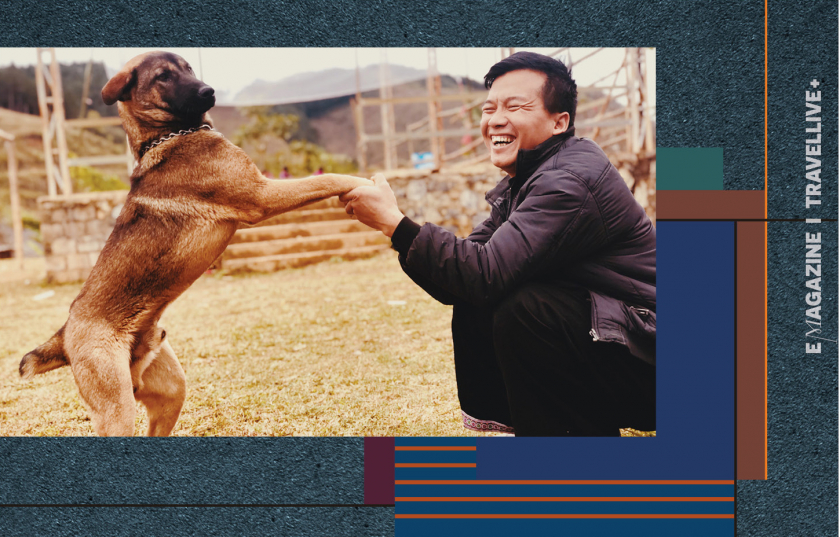
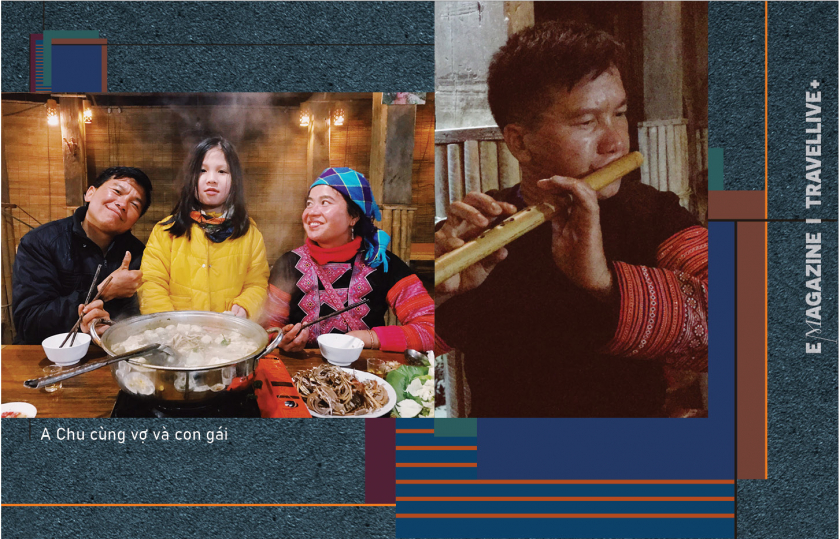

A Chu's homestay is not a traditional H'Mong house - which is built low to avoid strong winds. A Chu went down to Mai Chau to see the Thai people doing tourism and learned the Thai house model - a high, airy stilt house, suitable for tourists, especially foreigners. Back in the village, A Chu started to build a homestay, more versatile and unique. There are stilt houses for guests to sleep in groups or bungalows/villas for guests who want private space when staying in the village.
A Chu personally arranged the stones (like the Hmong people often arrange stones to make fences) to create... a reception desk, a bar counter or a fireplace. The bathroom area was covered with bamboo and Hmong fabrics woven by Sua were used as curtains, looking like eye-catching works of art with many unique patterns, creating curiosity for people... going to the bathroom.
From the buffalo gong or the plow, the corn mortar or the crossbow, the knife are all arranged by A Chu to decorate around the house to introduce the culture and customs of the H'Mong people to tourists. Anyone who is observant or likes to explore can learn many new things during their stay at A Chu's house. Every time I visit, there is something new for me to call the "tour guide" A Chu to introduce.
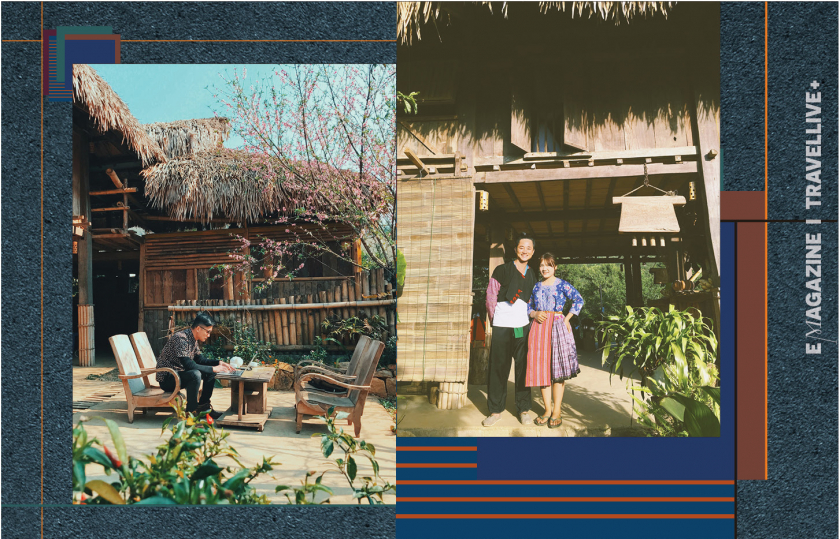
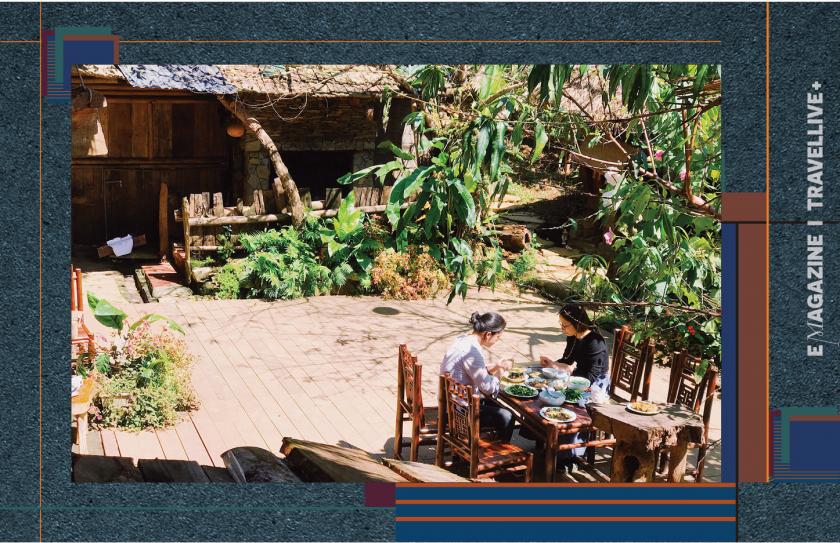
Since the first time we met, we became fond of each other, and every year I visited Hua Tat village a few times. Spring - summer - autumn - winter, I have been to the village in every season. But A Chu always invited me to visit during the H'Mong New Year to see more interesting things. And so I have "celebrated" two New Year's with my sworn H'Mong brother in Hua Tat village.

Like many Hmong people in all regions, when peach blossoms bloom and plum blossoms cover the fields and mountains, the Hmong Lenh people of Hua Tat village celebrate Tet, starting on the 30th day of the 11th lunar month.
Every family is bustling on this occasion, children who work far away also return to reunite and celebrate Tet together. Today this family celebrates Tet, tomorrow they go to another family, inviting each other to come and visit within a month, until Tet Nguyen Dan is the end of Tet for the H'Mong people.
That day I went up with a few friends and saw that A Chu's house was crowded with people - all relatives, neighbors, and friends. Many delicious dishes were performed by the women, such as: boiled black chicken, fried eggs with mugwort, cat's whiskers dipped in fish sauce with boiled duck eggs; the boys and men were in charge of grilling chicken, roasting pig, or grilled intestines... The fragrant smell of food wafted up and filled a large corner of the garden, distracting the Hmong youths who were playing soccer in the stadium next door.
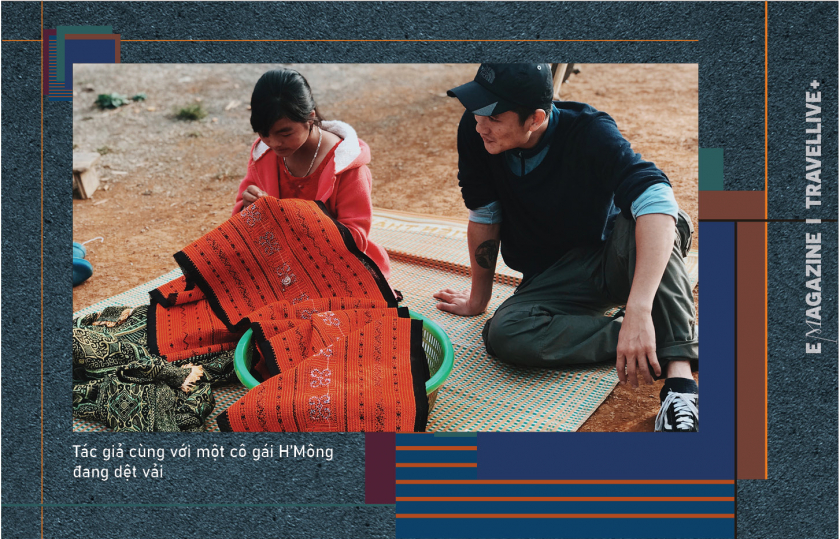
While serving the food, A Chu introduced me to the people at the party, then we started to raise our glasses of corn wine that A Chu's mother had personally brewed, celebrating Tet together. While we were tipsy from the alcohol, the music program also began.
In addition to his talent in panpipe dancing like the other H'Mong boys of his age, A Chu was also good at playing the flute or lip flute and combining graceful xoè dances with his wife - Sua, making the performance stage right in front of his house no different from a specially selected variety show. The children who led the singing were A Chu's children - the boy Seo Linh and the little girl My, who also contributed many performances to make the show more exciting.

By 10 pm, everyone had gone home. Hua Tat night was chilly and peaceful, you could hear the chirping of insects, and every now and then the sound of water dripping from the roof.
The next morning, waking up, looking out into the yard, seeing the sunny sky, the sunlight shining through the dew drops still lingering on the peach blossoms, suddenly making the visitor's heart filled with "spring".

This morning, Seo Linh - A Chu's son, took my group to make traditional Hmong paper. Seo Linh is in 7th grade this year but has been guiding for more than 4 years under the supervision of his father, so he is very knowledgeable and clever.
The paper-making house is also the house of the village shaman - A Cua. He is called a shaman because A Cua is very young, a few years younger than me. But as A Chu introduced, because Giang "chosen" A Cua to be a shaman when A Cua was still a teenager, so even though he looks young, A Cua's skills and experience are "very rich and profound".
A Cua's profession of being a shaman and making paper are closely linked together. The H'Mong people's paper is used to hang on the wall in the middle of the house, with a few rooster feathers attached to it and becomes a sacred place, an altar to worship ancestors. Every year on Tet, the H'Mong people will change the new paper with the hope that their ancestors will witness their sincerity and bless their descendants with a peaceful new year and good crops. The pieces of paper are also cut into small pieces and pasted on the corners, pillars of the house, on household items, with the meaning of sealing, ending the old year and welcoming the new year.
The group was explained by A Cua the process of selecting raw materials, the traditional rules and principles that paper makers must follow when making paper. And very honestly, A Cua confided that the experience of tourists will contribute to preserving and conserving the paper making profession of the H'Mong people, which is fading away.
When finished, A Cua led the group out to the middle of the yard to start working. The kids in the group were very excited to be able to freely create and decorate the paper. The finished paper was left to dry in the sun and would be dry the next day.



That afternoon, Seo Linh continued to take the group on a walk around the village, through plum gardens, peach gardens, bamboo forests, cat-ear rocky outcrops, and even through the white mustard flower beds of the locals, which looked very attractive to passersby. When the sun began to set over the fields, the group returned to the homestay. The men had already set out the tools for making H'Mong sticky rice cakes right where the music stage had been last night. The sticky rice was soaked in water for 6-8 hours before being put in a steamer to dry, then put into a trough - a whole tree trunk that had been skillfully carved, and pounded with a pestle. Two people pounded rhythmically and evenly until the sticky rice was soft and sticky. After that, the women took the soft rice and sat in the middle of the yard, rolled the cakes into large balls that fit in the palm of their hands, put them in banana leaves; when ready to eat, they flattened them, grilled or fried them, dipped them in honey and ate them - a strange and delicious version of sticky rice cakes. Tonight ended early, A Chu told everyone to take a rest to wake up tomorrow to catch the sunrise.

At 4:30 am, we heard A Chu waking everyone up. Everyone quickly warmed up and got ready to go out to admire the beautiful scenery. After more than 30 minutes of traveling, the group arrived at their destination, while it was still dark.
A Chu went ahead to lead the group and showed everyone the best spots to catch the sunrise. The sound of roosters crowing in the morning still echoed from the houses of the villagers in the nearby village. I set out the tea and coffee that had been brewed in advance, along with the sticky rice cakes that Sua had fried early, which were still hot. The scene was breathtaking and beautiful when the sun rose from behind the mountain range. Right in front of where we were standing was a layer of white clouds floating in the valley. When the sun rose higher, the sunlight spread over the entire mountain range and the clouds dissipated, the group returned to the homestay.


When we got home, some people continued drinking coffee, some sat in a corner on the porch next to the bar reading books, some played with the H'Mong dogs in the yard, the children were still chattering together under the peach and plum trees in the garden. A Chu also took the opportunity to chat about the family business situation, not forgetting to show me the new things he was doing - and this brother always had something new to do, which made me very impressed.
A Cua appeared, carrying some Hmong papers that the group had created yesterday, now completely dry. The children were very excited to see their finished work and carefully wrapped it up under A Cua's guidance, after thanking A Cua in the Hmong language that Seo Linh had taught them on the walk yesterday afternoon.
Sua had also finished making lunch for the group. After several days of being together, the last meal took place in a very intimate atmosphere, just like the motto that A Chu always cultivated in his family when he started opening the homestay - that is to bring experiences so that tourists stay for a long time, play deeply, and remember for a long time.
Seo Linh hung her whole body on my arm while My smiled shyly, holding onto her mother's skirt as the group greeted each other. I shook A Chu's hand tightly, wishing him good health to continue his career in community tourism with the H'Mong identity that Giang had cleverly "chosen" the right person.
And by the time you read about this journey, I may be about to welcome another early spring in Hua Tat village.
